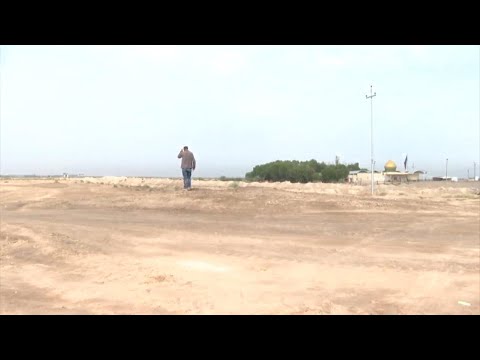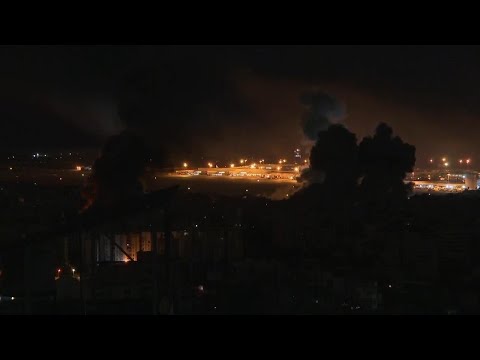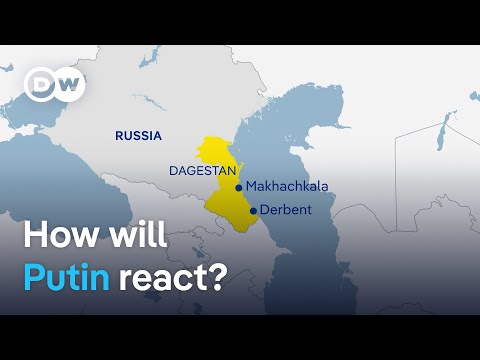(12 Nov 2024)
RESTRICTION SUMMARY:
ASSOCIATED PRESS
Al Hira District, Najaf, Iraq – 10 November 2024
1. Cars driving on main road
2. Various of Iraqi archaeologist Jaafar Jotheri exploring site
3. SOUNDBITE (English) Jaafar Jotheri, professor of archeology at the University of Al-Qadisiyah:
++SOUNDBITE STARTS IN SHOT 2, PARTIALLY COVERED BY SHOTS 4-7++
++CONTAINS ANGLE CHANGE++
“This location, or this battlefield, belonged to the al-Qadisiyah battle, which happened in the early Islamic period, when the Arab and Muslim army came here from the west and then the Sassanian Empire army came from the east, and they met here in this location. We have the main fortress where I am standing here. Al-Qadisiyah fortress, which is a large mound surrounded by a fortified wall and we believe that this was the main camp of the Muslim leader, and then over here we can see the al Khandaq, the trench, or one of the borders of the Sassanian Empire. Al-Qadisiyah battle is one of the significant war, or conflict, or a significant battle that happened in the early Islamic period. We used the satellite images, we used the ground truthing, we used the historical text to find out that this is the exact battlefield."
4. Various of Jotheri looking at satellite images
5. Tracking shot of a berm on site
6. Various of Jotheri examining materials in soil
7. Various of Jotheri exploring site
STORYLINE:
Declassified 1970s-era U.S. spy satellite imagery has led a British-Iraqi archeological team to what they believe is the site of a 7th-century battle that became decisive in the spread of Islam throughout the region.
The Battle of al-Qadisiyah was fought in Mesopotamia – present-day Iraq – in the 630s AD between Arab Muslims and the army of the Sassanid Persian dynasty during a period of Muslim expansion.
The Arab army prevailed and continued on its march into Persia, now Iran.
A joint team of archeologists from the UK’s Durham University and the University of Al-Qadisiyah stumbled across the site while undertaking a remote sensing survey to map a pilgrimage route from Iraq’s Kufa to Mecca in Saudi Arabia built more than 1,000 years ago.
The findings were announced in a paper published Tuesday in the journal Antiquity.
While mapping the route, the team noticed that a site some 30 km (20 miles) south of Kufa in Iraq’s southern Najaf province – a desert area with scattered plots of agricultural land – had features that closely matched the description of the al-Qadisiyah battle site described in historic texts.
A survey on the ground confirmed the findings and convinced the team that they had correctly identified the site.
The key features were a deep trench, two fortresses and an ancient river forded by elephant-mounted Persian troops, said Jaafar Jotheri, a professor of archeology at the University of Al-Qadisiyah who is part of the team that made the discovery.
The survey team also found pottery shards consistent with the time period when the battle took place.
Jotheri said that Iraqis of his generation, who grew up under the rule of Saddam Hussein, were all familiar with the battle in minute detail, down to the names of the generals on both sides.
The battle at the time had political connotations – Iraq was engaged in a devastating war with Iran through much of the 1980s. Saddam pointed to the Battle of Qadisiyah as a harbinger of victory for Iraq.
Like most children growing up in that era, Jotheri said he had watched a popular movie about the battle multiple times as it was on regular rotation on television.
AP Video shot by Ali Jabar
Find out more about AP Archive: http://www.aparchive.com/HowWeWork
Twitter: https://twitter.com/AP_Archive
Facebook: https://www.facebook.com/APArchives
Instagram: https://www.instagram.com/APNews/
You can license this story through AP Archive: http://www.aparchive.com/metadata/youtube/a68ca2d9581b42f38c6232d9165833b8
Author: AP Archive
Go to Source
News post in November 17, 2024, 3:03 am.
Visit Our Sponsor’s:
News Post In – News





